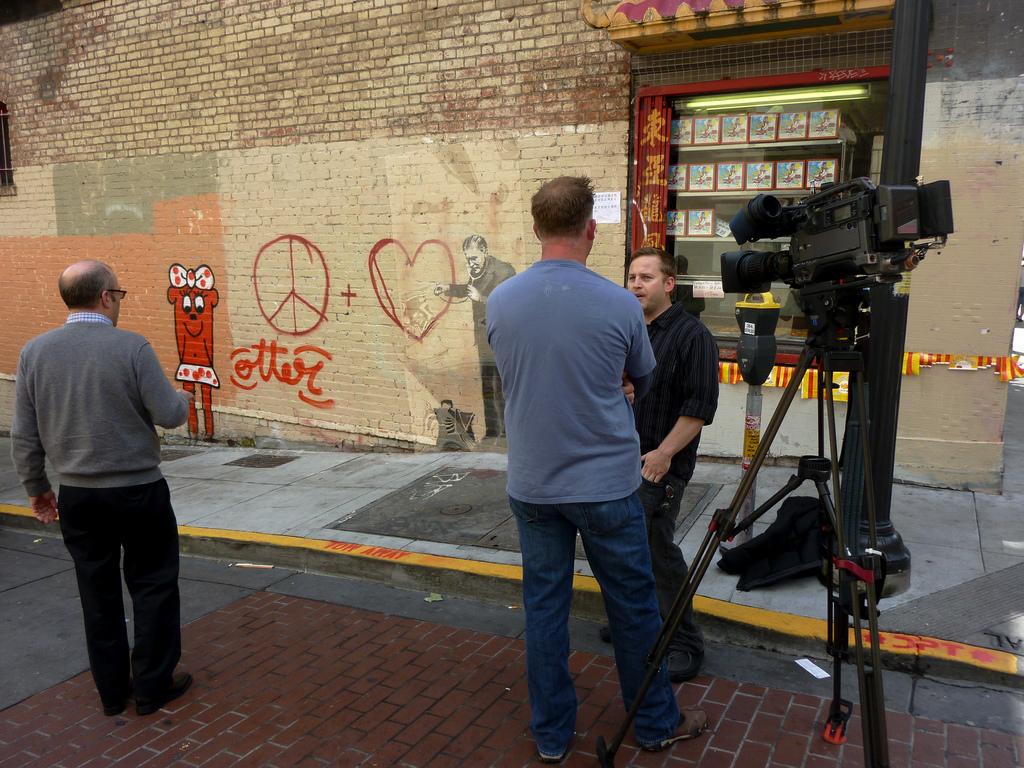
In today’s multimedia world, a piece of news, either local or national, can go viral in hours. Anything from a celebrity scandal to a cute animal picture to a politician’s faux pas can become the story of the day. Because of this phenomena, it’s become increasingly common for journalists to adapt these broad-appeal pieces for local audiences.
[su_note]Pursue a future in broadcast journalism. Learn more about the School of Broadcast Journalism at the New York Film Academy. [/su_note]
Helps Small-Market Broadcasters
Adapting national topics of interest for local audiences can be helpful in small markets where big news doesn’t happen every day. Imagine you’re an evening producer at a small-town television station. The weather is nice today, there weren’t any car accidents or fires, no one knocked over a convenience store, and that missing Golden Retriever has been found and reunited with his family. How are you going to fill the five, six and ten o’clock news broadcasts?
You could always lead with weather. So what’s if it’s sunny and clear and going to stay that way for the next week? If you’re lucky and you have an especially personable meteorologist, maybe he or she can kill two minutes talking about how nice it is outside and what a great day it would be for fishing or other outdoor activities. But eventually, you’re going to have to talk about something else.
Now what? Maybe you could get a local official to talk about a public safety issue, like wearing seat belts or preventing forest fires. That kills another two minutes, but if your audience is still conscious afterward, they’re going to want to hear about something else.
That’s where your viral news story comes in. You already know people find it interesting, because they’re arguing about it on Facebook, right? You might be able to pull a package from your station’s national network, but if you want to make the story new and fresh for your viewers, delivering local reactions is the best idea. Send a reporter to the park, the mall, or the nearest sidewalk to get responses from your own audience.
Not Just for Slow News Days
Slow news days in small towns aren’t the only opportunities to localize national stories. Even if there is ample neighborhood news, cute or funny viral videos make good kickers. News about serious topics can be adapted by interviewing local individuals who have had similar experiences. For example, if Caitlyn Jenner’s Vanity Fair cover is trending, you could interview local transgender people about their experiences transitioning. Do they feel that Jenner’s experience was easier because of her celebrity status? Have they suffered discrimination in their local community? What local laws are in place regarding discrimination against transgender individuals? This provides a new angle that social media might not have covered, and helps viewers see a subject in the context of their own neighborhood.
Top 100 Markets Also Benefit
Localizing widespread news isn’t limited to broadcasters in small markets. Producers in bigger markets also want to engage viewers with social-media popularized stories that interest them. National news items can be adapted to a metro area by polling the audience to show how local viewers feel about an issue, or finding statistics on how many people in the area are affected by a problem. Local politicians are often willing to comment on the news item of the day.
Good for Both Television and Radio Broadcasters
National news stories offer opportunities to engage audiences for both television and radio journalists. TV stations can create packages with local angles on big news; radio broadcasters can do the same, but they often have additional opportunities. Call-in shows on local radio often feature a mix of local and national news topics. Deejays can adapt a national topic with only a few minutes of research. The radio host simply reiterates the facts of the story, takes calls from viewers, and asks questions about their responses.
When doing this type of segment, it’s important for the host to feature callers with differing opinions, so the conversation doesn’t start to sound one-sided. Regardless of his or her personal feelings about an issue, the broadcaster should show both sides of an issue, especially with polarizing topics. As is the case with television news, asking callers how they see a national issue play out in their own community is important.
Gives a Boost to Social Media Sharing
Just sharing a viral story from a local TV or radio station’s national affiliate on social media can help the local broadcaster gain shares, likes and comments on social networks. This is most effective when the local affiliate adds a question and asks for audience opinions, instead of just re-posting the video or story.
Helps Local Broadcasters in Multiple Ways
Adapting a national news story for local audiences has many benefits: It helps small-market journalists through slow news days, improves social media reach, engages local audiences with stories they’re already interested in, and allows reporters to learn more about the opinions and concerns of their audience members.
Click here to learn more about how to adapt a national news story for local coverage.
